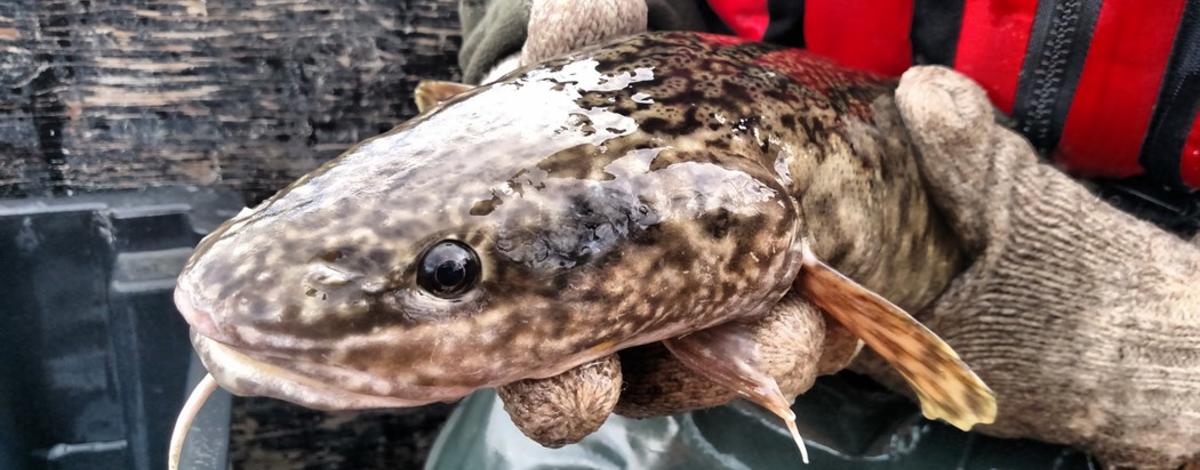Burbot are a unique fish species native to the Kootenai Basin. The population there declined drastically beginning in the 1960s due to many factors (e.g., overfishing, dam operations, and land changes). Harvest fisheries were closed in the basin by the mid-1990s and remain closed today. Staff from the Idaho Department of Fish and Game (IDFG), Kootenai Tribe of Idaho (KTOI), and British Columbia Ministry of Forest, Lands, and Natural Resource Operations (BCMFLNRO) have been collaborating to restore the Burbot population in the Kootenai Basin since the early 2000s.
One key component of the Burbot recovery effort is a conservation aquaculture program that is run by KTOI. Basically, this involves collecting eggs from wild Burbot and raising them in a hatchery until they can be stocked back into the wild as juveniles. The goal is to rebuild the Burbot population in the Kootenai Basin. However, this strategy requires an egg source from another more abundant Burbot population.
Fortunately, a healthy Burbot population exists in nearby Moyie Lake, BC. Fish in this population are genetically similar to the population in the Kootenai Basin. Therefore, each year IDFG, KTOI, and BCMFLNRO collect fertilized eggs from Burbot in Moyie Lake to (1) raise in a KTOI hatchery and then (2) release into the Kootenai Basin. This is a big effort and requires a crew of 15-25 individuals spending two weeks in February on Moyie Lake. During these two weeks, adult Burbot are collected by ice fishing and under-ice netting. Adults that are collected are then spawned and released alive back into Moyie Lake. Fertilized eggs are transported to a KTOI-owned and operated hatchery where they are incubated, hatched, raised for six months, and then released into the Kootenai River and Kootenay Lake with the goal of building a self-sustaining and harvestable Burbot population in years to come. Check out the video to see some highlights of the work that went into collecting and spawning Burbot during February 2017. This work would not be possible without close collaboration among IDFG, KTOI, BCMFLNRO, U.S. Army Corps of Engineers, the University of Idaho Aquaculture Research Institute, and funding from the Bonneville Power Administration.

